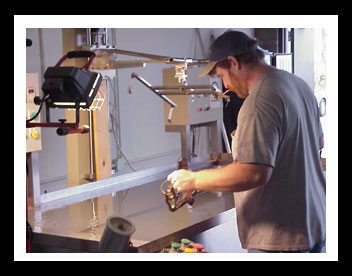Process
An Introduction To Hydrographic Printing
Hydrographic printing is known by several names. It is also called water transfer printing, cubic printing and fluid imaging. This new printing technology is based on a water-soluble film, upon which printed patterns of ink are applied. Like the new film-based breath mint sheets you can place on your tongue and allow to dissolve, the film base dissolves in the water, leaving the ink, like the mint flavor, behind. The ink then adheres to any item dipped into it.
Who Uses Hydrographic Printing?
Hydrographic printing is used by printers all over the world. These printers print patterns on items ranging from entire all-terrain vehicles to toy water pistols. Items that are commonly printed include sporting equipment, automotive trims and electronics cases. Items made of plastic, metal, glass and many other materials and of many shapes can be successfully printed using this method.
What are the patterns for Hydrographic Printing?
There are innumerable patterns that can be applied using the hydrographic printing process. All of the patterns are created by filmmakers specializing in preparing these films. Most of these filmmakers are located abroad. Most printers in America order film from an American importer, such as TWN. Some patterns are copyrighted: to use these, the printer must pay an additional fee. You can even design your own pattern, although there is significant effort and cost in this endeavor. Sample patterns are displayed on the TWN web site at: http://watertransferprinting.com/camo.htm
Is Hydrographic Printing a good choice for my item?
Not all items can be printed hydrographically. Some substances do not print well. Items that are contaminated by greasy residue from manufacturing, items that canot be immersed in water and some items with a very complex shape may not print well. However, most items of wood, metal, ceramics, glass, fiberglass and plastic respond very well to this printing process. Unlike paint, you can apply complex patterns, such as camoflage and carbon fiber, in a single step.
To find out for sure if your item is a good candidate, you need to send us a sample. See our sample policy for more information on sampling.
An Overview of the Hydrographic Printing Process
Preparation
The item to be printed is sanded and coated with primer.
After drying, the item is painted with a base coat. The base coat colors may be specific to the ink pattern to be applied. When dry, the item is ready to be printed.
Printing
A piece of printed film is cut to size and laid on the surface of the water.
The printed film is sprayed with a substance that releases the ink from the underlying film material. The ink remains floating on the water.
After a brief period, the item to be printed is dipped through the ink pattern into the water, and immediately removed. The weight of the item causes the ink to wrap around it and allowing the ink to be applied in three dimensions.
Washing
The item is thoroughly washed in warm water to remove film residue.
Top Coating
When the item is dry, it is coated with a protective finish.
Contact the Webmaster
Copyright Lakota Industries 2005
|

